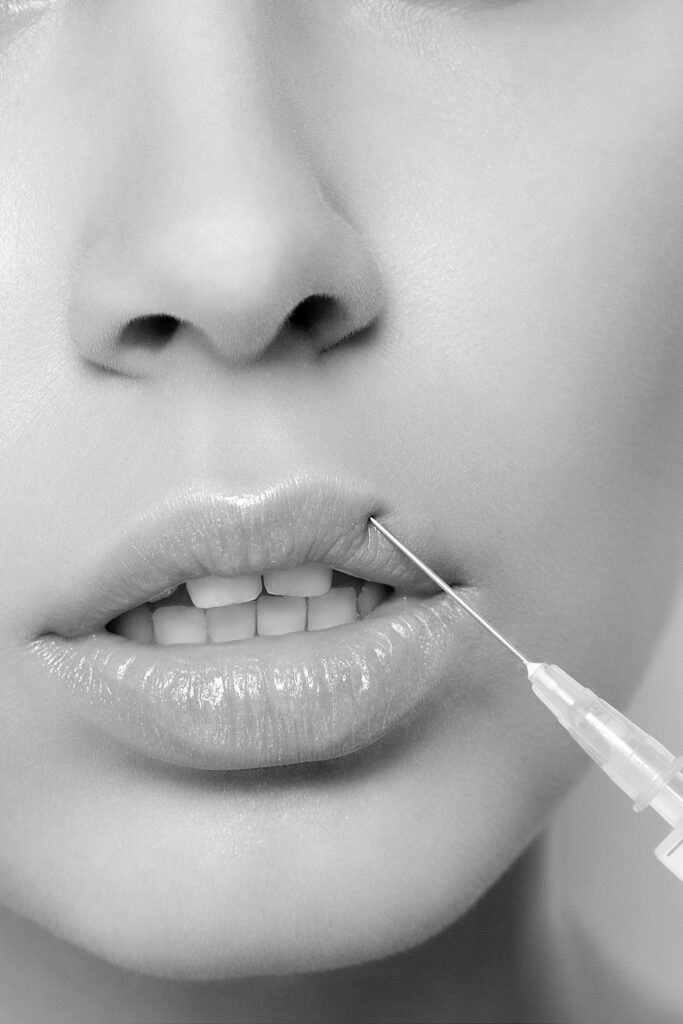Dermal fillers
If you’re thinking about getting them, or have heard them mentioned and want to know more, then this is your comprehensive overview of the cosmetic procedure that’s designed to help diminish the appearance of fine lines, wrinkles and other visible signs of ageing.
Dermal fillers are small injections of gel, typically made up of hyaluronic acid, that fill in wrinkles and add volume to soft tissue. You can have dermal fillers in different parts of your face: around the eye, cheeks, mouth and jawline, as well as lip fillers administered directly into the lip tissue.

Effects
Fillers basically restore lost volume to your face and plump areas, so that deep-set lines are smoothed. As we get older our bodies stop producing collagen and elastin, both of which contribute to the youthful look.nExperts argue over when we start losing collagen, but the generally agreed age is 25. Your collagen and elastin levels then decline at a rate of about 2% per year, and your body will have stopped producing it altogether by your late twenties.
Dermal fillers’ effects lasting depends on how your body reacts and which hyaluronic acid is used, but most dermal fillers will last between 10 and 18 months.
Side Effects
It’s easy for clients to confuse side effects to reactions, so it’s extremely important to understand what side effects can be expected.
‘Temporary side effects – those that are completely normal after facial injections – can include; swelling, redness and tenderness.
‘It’s completely normal to experience a little bit of discomfort, redness and bruising after the procedure. Reactions generally occur immediately after the needle injection and can include; redness, swelling, pain, itching, bruising and tenderness at the injection location.
These reactions are generally mild to moderate and usually disappear shortly after injection, usually resolved a few days after the injection into the skin.
Pain on dermal filler
‘There may be a slight discomfort whilst the filler is being injected into the face. But we minimise this by applying an anaesthetic cream before treatment. To provide further relief and alleviate as much pain as possible, our fillers contain a pre-mixed local anaesthetic.’
Types of fillers
The most common type of facial filler is hyaluronic acid, the natural substance found in many areas of the body including eyeballs, joints and skin, that can hold 1000x its weight in water. Hyaluronic facial fillers help to maintain shape, even out depressions in the skin and provide hydration.
‘Poly-Caprolactone (PCl), or Ellanse, is another popular filler that acts as a collagen stimulator,’ the doctor adds. ‘When injected in strategic places in the face, it triggers the body’s natural response to produce collagen, which provides you with a much longer lasting result.’
Botox and fillers
Yes, there is 100% a difference between Botox and fillers.
Botox stops the small muscles in your face from making the movements that cause wrinkles, while dermal fillers plump from below the wrinkles to smooth them out and promote the youthful look.’
Cost factor
Well, that depends entirely on how much you’re going to have done, which fillers you opt for and who you pay to administer them.
The face has many underlying sensitive structures, for example nerves, vessels and eyes, when treating wrinkles. If the person administering fillers is untrained and not careful, there’s risk of damage, infection, artery occlusion – leading to tissue death and scarring. Hence why it’s so important to see a registered medical professional -Cosmetologist, who understands the anatomy of the face and knows the areas to avoid.
At Derma Elite, be assured we provide the best dermatologist, best quality care, best quality of filler and the best price in bangalore. Visit us at HSR Layout to know more.
